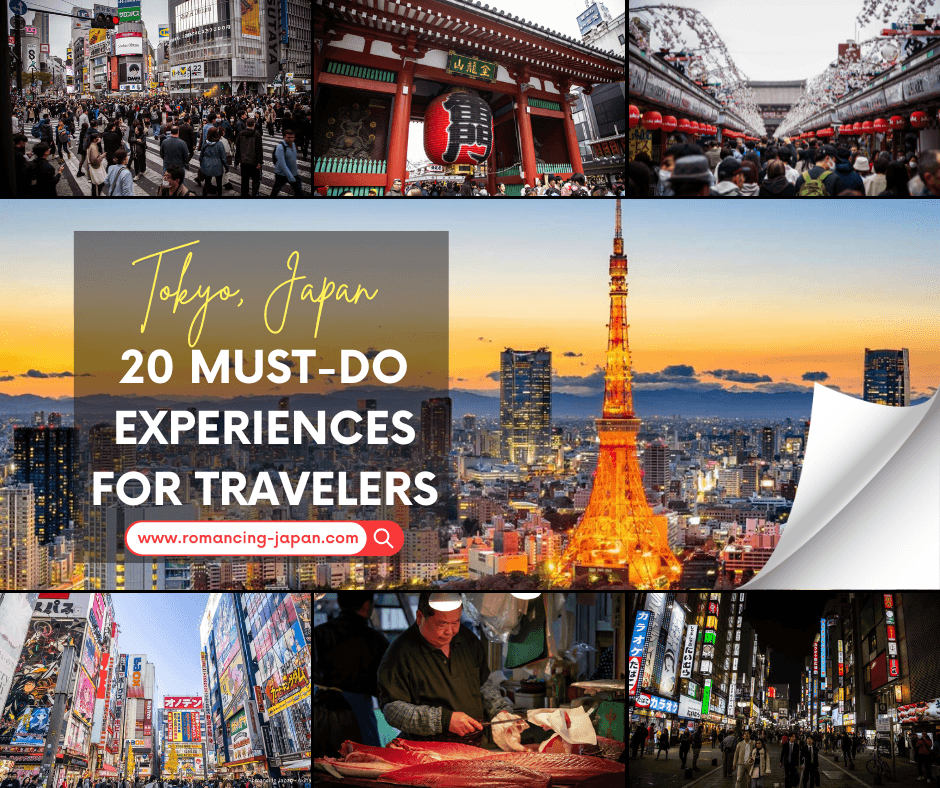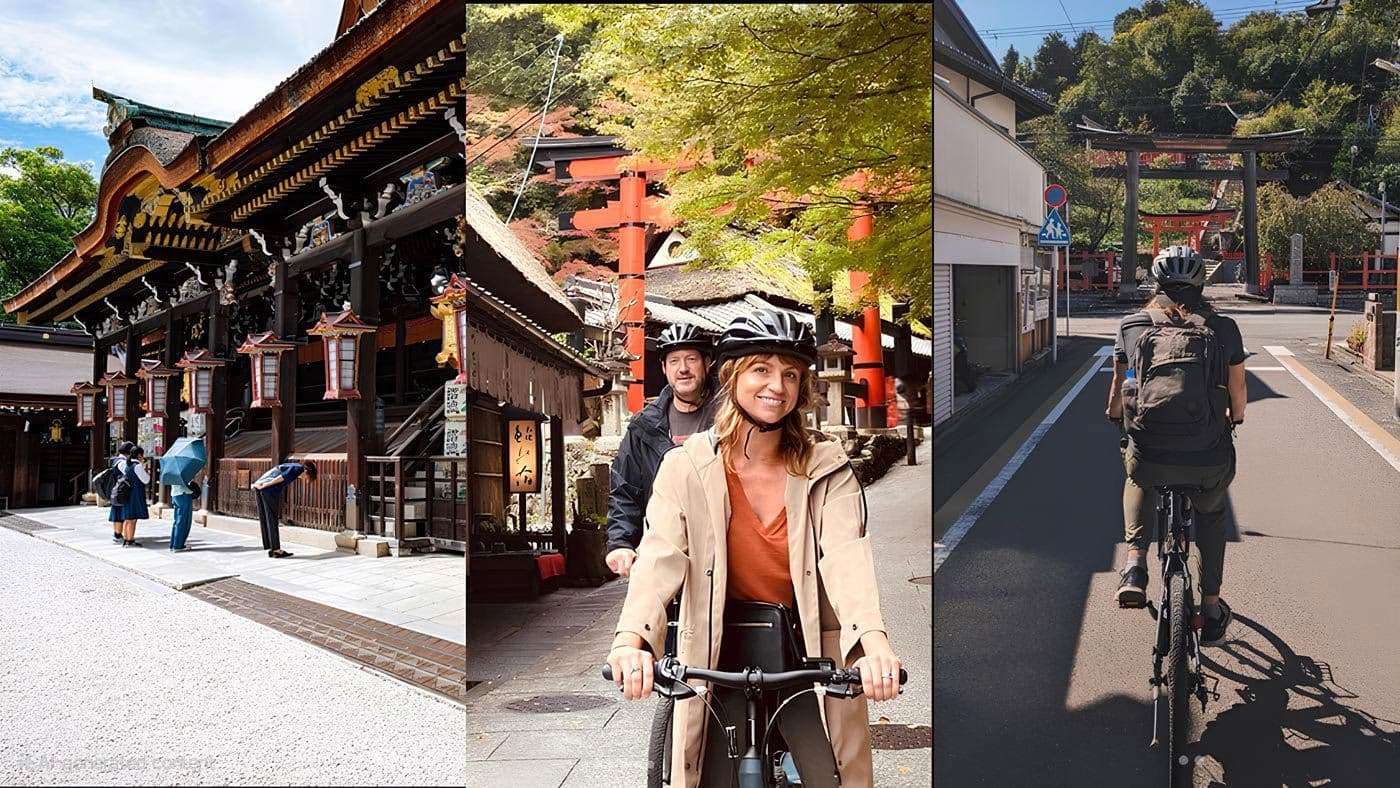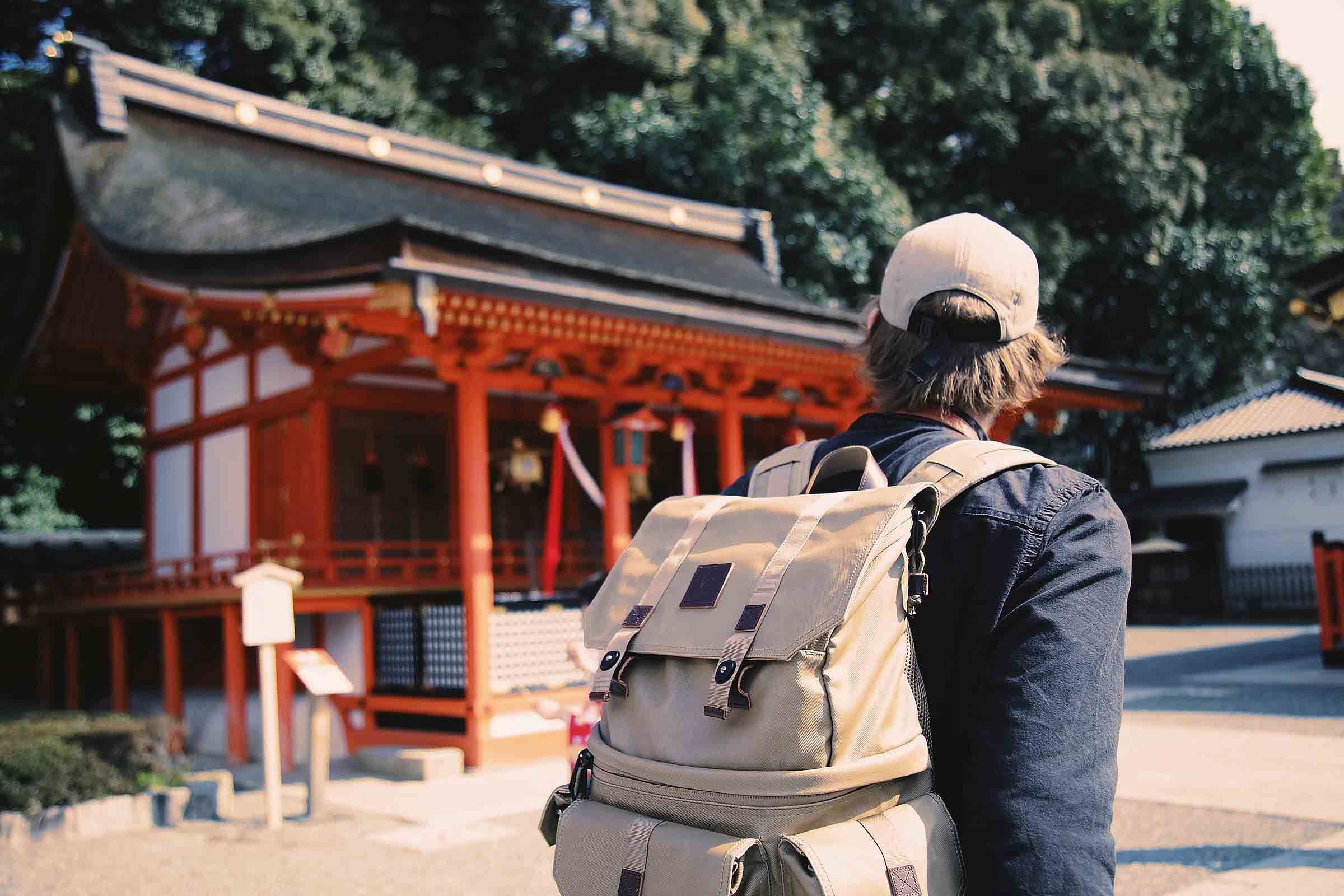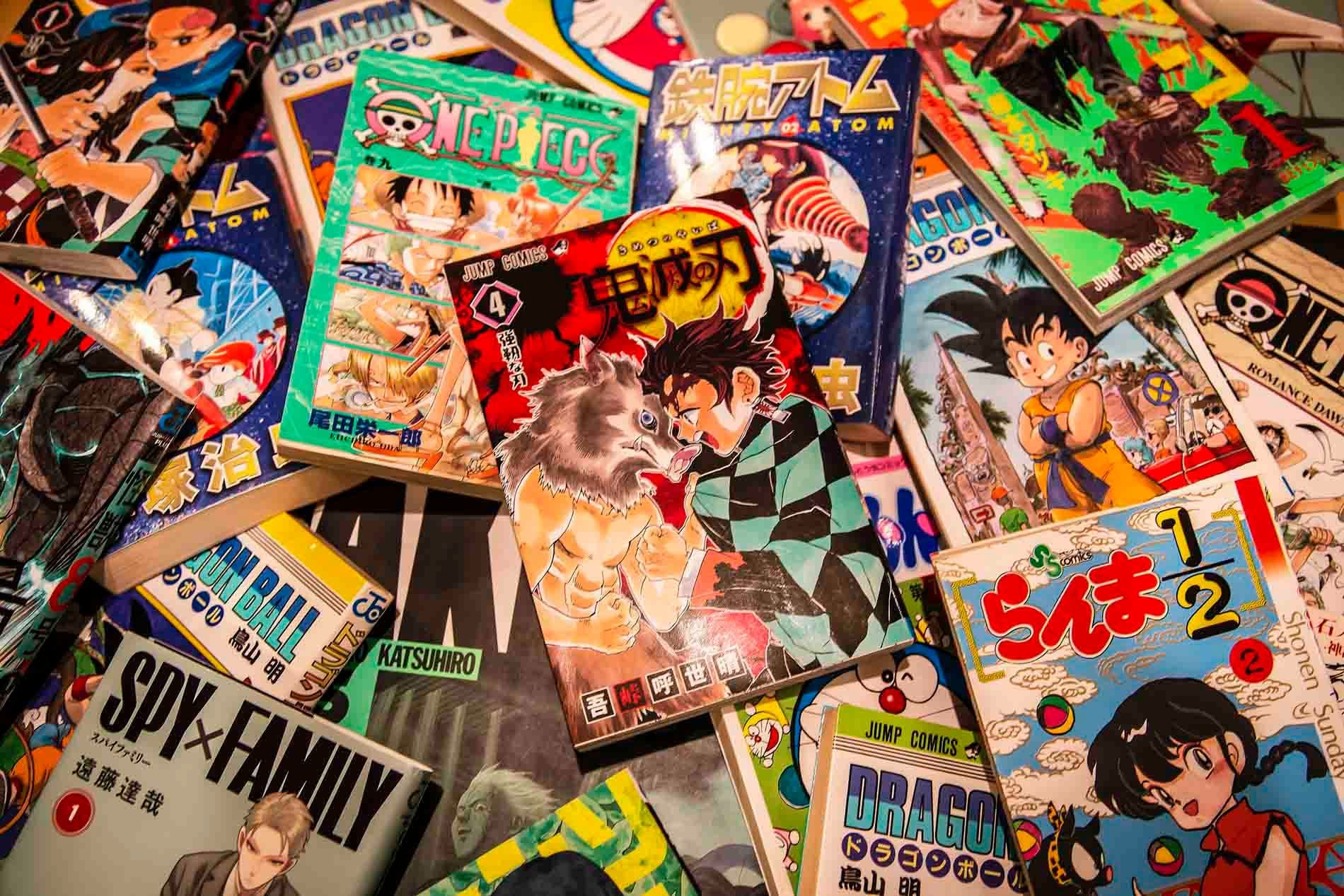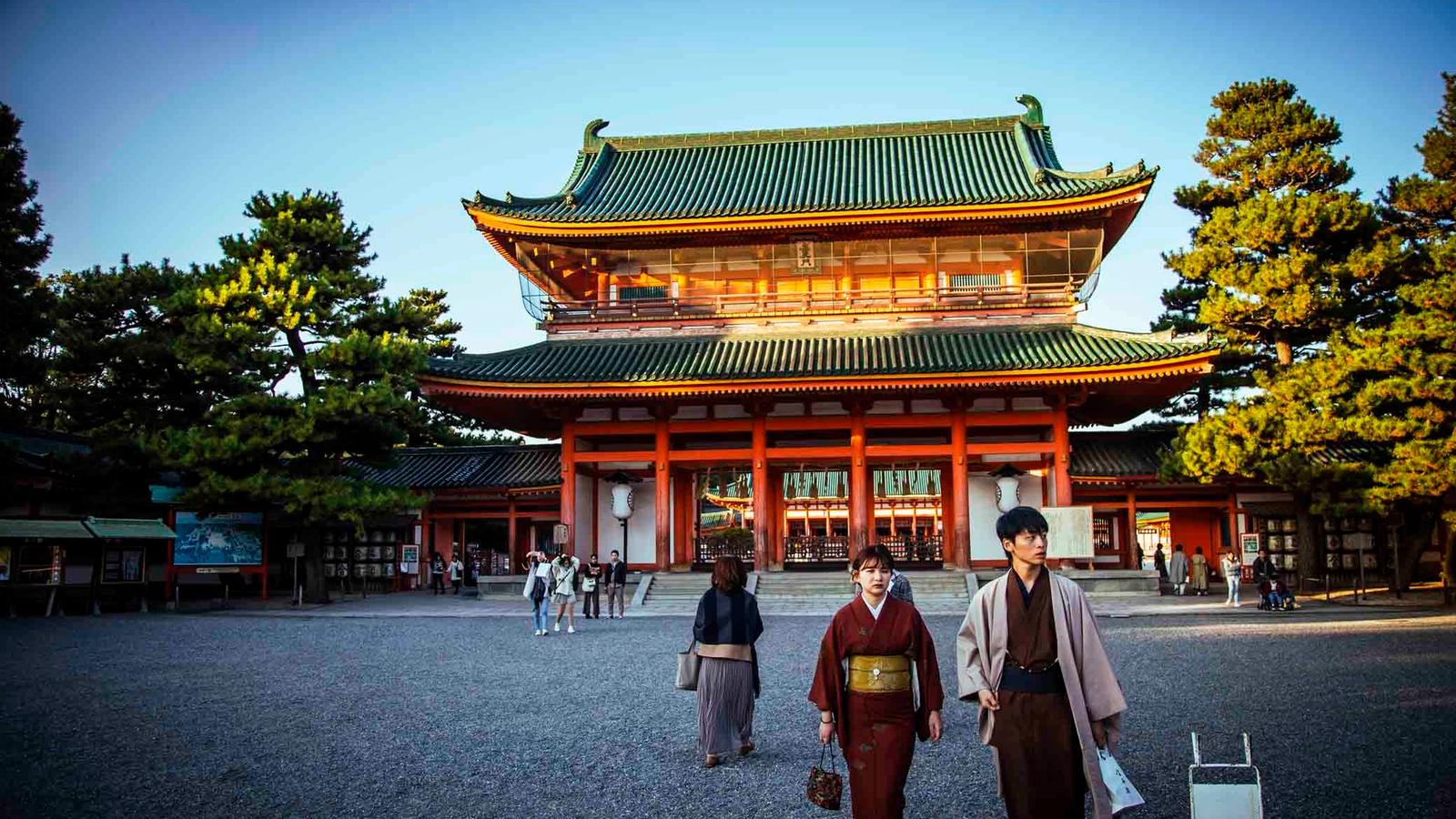
Heian-Jingu Shrine: A Glimpse into the Golden Age of Japan's History
James Saunders-Wyndham

James Saunders-Wyndham
Table of contents:
Heian-Jingu Shrine (平安神宮) stands proudly among Kyoto's many historical treasures as one of Japan’s most renowned shrines.
Famous for its striking red architecture, the shrine symbolizes the artistic and cultural heights of Japan's Heian period (794–1185). Built in 1895 to commemorate the 1100th anniversary of Kyoto’s founding (originally named Heian-kyo), the shrine replicates the grandeur of the ancient Imperial Palace, giving visitors a glimpse into the Heian Period’s heritage.

Located in eastern Kyoto, the shrine welcomes you with an enormous red torii gate, a dramatic entrance inviting travelers into Japan’s cultural Golden Age. The Heian period, a time rich in art, poetry, and literature, was also historically significant as the era when Japan’s capital moved from Nara to Heiankyo, now known as Kyoto.
The nearest train station to Heian-Jingu Shrine is Jingu-Marutamachi Station (神宮丸太町駅) on the Keihan Line (京阪線). However, if you're traveling from Kyoto Station, there are easier ways to reach the shrine.
Travel from Kyoto Station to Heian-Jingu Shrine (Approximately 30 Minutes):
Upon arriving, you’ll encounter the impressive red torii gate, signaling the start of your exploration into the captivating history and beauty of Heian-Jingu Shrine.

The best seasons to visit Heian-Jingu Shrine are during the spring and autumn. This is because of the brilliant seasonal colors that come through at that time of year.

One of the most enchanting sights at Heian-Jingu Shrine is the blooming cherry blossoms in spring. The shrine becomes a popular spot for hanami (cherry blossom viewing), with soft pink blossoms providing a contrast against the shrine’s red buildings. This creates an unforgettable experience, capturing both the historical charm and natural beauty of Kyoto.

In autumn, Heian-Jingu Shrine is beautifully changed by vibrant red, orange, and yellow foliage. The shrine's expansive gardens, especially its maple trees, turn into an stunning landscape. Autumn provides a peaceful retreat, combining the shrine's rich history with nature’s stunning seasonal display.




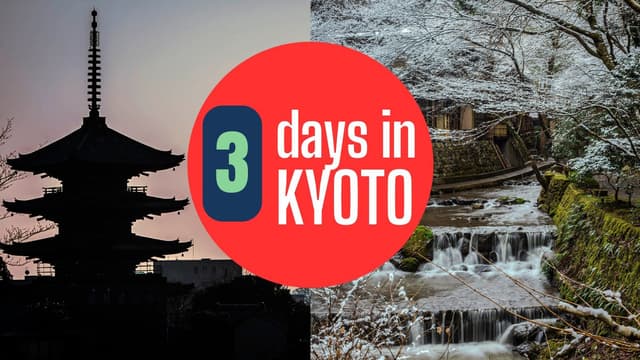
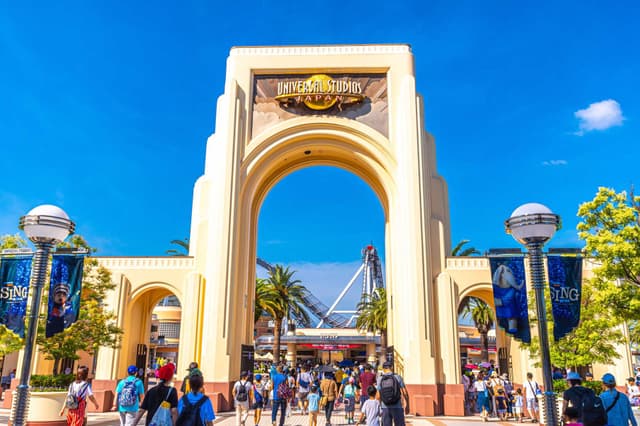


Tucked away in Kyoto’s Sakyo Ward, Heian-Jingu Shrine offers a peaceful escape and a chance to connect with the city’s imperial heritage. Built in 1895 to commemorate the 1100th anniversary of Heian-kyo (present-day Kyoto), this shrine is especially known for its soaring vermilion torii gate and spacious shrine grounds.
Whether you're drawn by its historical significance or simply seeking a quiet stroll away from the crowds, Heian-Jingu delivers a memorable experience.
Early visits also offer soft natural light, perfect for photography, especially in spring and autumn.

Behind the shrine lies one of Kyoto’s most underrated gems—the Shin’en Gardens. These four connected gardens span over 30,000 square meters and are designed to reflect the changing seasons.
Expect to find:
These gardens offer a calm retreat, far removed from Kyoto’s busier temple circuits.

Within the gardens, visitors can sometimes participate in a traditional tea ceremony—a refined experience that highlights the values of harmony, respect, purity, and tranquility.
These intimate gatherings are held in teahouses set among the trees and often require advance reservation through local tour providers. If you're curious about Japanese culture beyond sightseeing, this is a lovely and meditative way to experience it.
While Heian-Jingu is beautiful on its own, joining a guided walking tour adds historical and cultural context. Knowledgeable guides can explain:
📍 Heian Jingu Shrine
📍 Address:
97 Okazaki Nishitennocho, Sakyo Ward, Kyoto, 606-8341
🎟 Admission Price:
⏰ Opening Hours:
6:00 AM – 5:00 PM
🚫 Closed Days:
Open all year
🔗 Official Website:
Visit HereHeian-Jingu Shrine is famous for its stunning red architecture and beautiful gardens. Built to honor the Heian period, it symbolizes Japan’s cultural and artistic heritage. Visitors enjoy its tranquil atmosphere, scenic ponds, and historic significance.
The best times to visit Heian-Jingu Shrine are during spring and autumn. In spring, the gardens bloom beautifully with cherry blossoms, while autumn brings vibrant fall colors. Early morning visits also allow you to avoid large crowds.
Entry to the main shrine grounds is free, but the gardens have a small entry fee (usually around 600 yen). The gardens are well worth visiting, especially during peak blossom or autumn foliage seasons. Ensure you bring cash for the entrance fee.
Plan to spend around one to two hours exploring Heian-Jingu Shrine and its gardens. Allow extra time if visiting during busy seasons like cherry blossom or autumn foliage. This time-frame gives you plenty of time to appreciate both the architecture and natural beauty.
Yes, Heian-Jingu hosts several festivals each year. The most famous event is the Jidai Matsuri (Festival of the Ages), held on October 22nd. This colorful festival features traditional costumes and parades celebrating Kyoto's rich history.
Loading Comments...

I've been immersed in Japanese culture and daily life for over 30 years and am proud to call Japan my home. Originally from Australia, my journey has taken me from teaching at Japanese universities to traveling extensively across the country, uncovering its hidden gems. As a web developer, I built Romancing Japan from the ground up to share these experiences with you. Whether it's the charm of old Kyoto, the pulse of Tokyo, or the tranquility of the countryside, I love helping others discover the magic of Japan—one story at a time.
